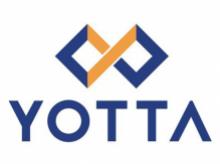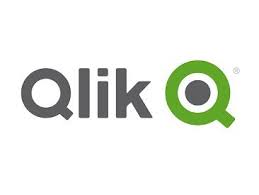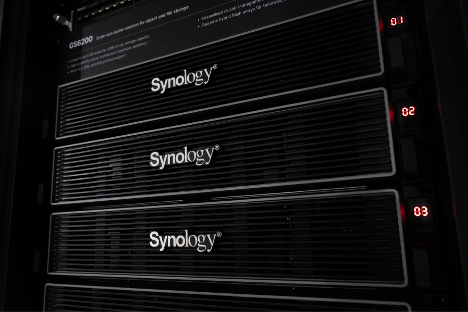Veeam Data Protection Trends Report 2024 Finds Cyber-Attacks the #1 Cause of Business Outages
Veeam Software, the #1 leader by market share in Data
Protection and Ransomware Recovery, today released insights from the company’s
fifth annual Veeam
Data Protection Trends Report. While companies say they will spend more trying to
fend off cyber-attacks, the survey found IT leaders are feeling even less
protected and more concerned about their ability to recover and restore
mission-critical data. Respondents shared that cyber-attacks remain the top
cause of outages and that while organizations are putting more emphasis on
utilizing the cloud for major recoveries, only a small percentage believe
they’d be able to recover from even a small crisis in under a week.
Highlights of the Veeam Data Protection Trends Report 2024:
· Cyber-Attacks are
the #1 Cause of Outages: For the fourth straight year, cyber-attacks
were listed as the most common and most impactful causes of business outages
across organizations. The fact that other types of outages followed closely
behind – infrastructure/networking, storage hardware, application software,
public cloud resources, and server hardware – illustrated the growing need for
modernized backup strategies.
· Ransomware
Continues to be a ‘When’ Not an ‘If’: 76% of organizations were
attacked at least once in the past 12 months. While this number is down from
85% in 2023, 26% reported being attacked at least four times this past year. So
according to the report, more organizations were hit quarterly than those who believe
they were not attacked at all. Recovery is still a major concern, as only 13%
said they can successfully orchestrate recovery during a DR situation.
· Digital
Transformation is Being Hampered by Cyber-Attacks: The survey
ranked protecting against cyber threats and addressing environmental, social,
and governmental goals as the biggest inhibitors to IT modernization and digital transformation initiatives.
These factors scored higher than usual struggles related to skills, economic
concerns and organizational issues, due to the amount of effort and resources
that were being diverted from digital transformation or IT modernization
investments.
· Only 32% of
organizations believe they can recover from a small attack, crisis or outage
within a week: While most organizations consider cyber resiliency a foundational
aspect of their broader business continuity or disaster recovery (BC/DR)
strategy, BC/DR preparedness is not yet “passing” most SLA expectations. When
asked how long IT would need to recover 50 servers, only 32% believed their IT
staffs could recover the servers within five business days. Other supporting
statistics reflect the growing gap between what data protection business units
expect and what IT services can deliver is increasing. When asked about their
latest large scale cyber/disaster test, less than 3 out of 5 (58%) servers were
recoverable within expectations.
· Data Protection
Budget Increases are Accelerating: Data protection budgets are
expected to grow by 6.6% in 2024. This is the second straight year the survey
revealed that data protection spending growth will outpace IT spending growth.i Overall, 92%
of organizations expect to spend more on data protection in 2024 to continue to
prepare against cyber-attacks as well as the changing production landscape that
requires different approaches to data protection.
· Data Protection and
IT Security are becoming more integrated: For the second straight year,
survey respondents consider the most common and most important aspect of a
modern data protection solution is one that integrates with cyber security
tools. Two out of five (41%) consider some aspect of mobility in cloud
scenarios as most important characteristic of a modern solution, including the
ability to move a workload from one cloud to another and the standardization of
protection between on-premises workloads and IaaS/SaaS.
“Ransomware continues to be the biggest threat to business continuity,”
said Dave Russell, VP of Enterprise Strategy at Veeam. “It’s the number one
cause of outages today, and protecting against it is hampering digital
transformation efforts. Furthermore, although companies are increasing their
spend on protection, less than a third of companies believe they can recover
quickly from a small attack. The findings in this year’s Veeam Data Protection
Trends Report highlight the need for continued cyber vigilance, and the
importance of every organization to ensure they have the right protection and
recovery capabilities. It’s why Veeam’s mission in 2024 is to keep businesses
running.”
Other notable insights from the report include:
· Most Organizations
Are Using Containers But Not Backing Them All Up: Container
usage continues to rise, with 59% of enterprises running them in production,
and another 37% either rolling them out or planning to. Unfortunately, only 25%
of organizations use a backup solution that is purpose-built for containers,
while the rest of organizations back up only some of the underlying components
– e.g., storage repositories or the database contents. Neither tactic ensures that
the applications and services will be resumable after a crisis, or even a
simple import/configuration error that needs to be undone.
· 2024 Will See
Significant Job Changes Outside the Organization: The fact that
47% of respondents expressed an intent to seek a new job outside of their
current organization within the next twelve months represents both a challenge
and an opportunity for data protection initiatives. While losing valuable data
protection talent puts organizations at a significant disadvantage when crises
inevitably strike, the market shift presents an opportunity to add knowledge to
protect modern production workloads that reside in clouds, such as Microsoft
365, Kubernetes containers, or other IaaS/PaaS deployments.
· Hybrid Production
Architectures are Forcing Reconsideration of ‘Backup’: For the
second straight year, the two most important considerations for “enterprise
backup” solutions are reliability and the protection of cloud-hosted workloads
(IaaS and SaaS). This is problematic for organizations relying on older
datacenter-centric data protection solutions. As organizations move workloads
from one platform or cloud to another, IT teams relying on legacy backup
solutions that do not offer equitable protection of cloud-hosted workloads will
struggle to maintain SLAs, particularly those that embrace cloud-native
offerings like Microsoft 365/Salesforce (SaaS) or containers.

































Leave A Comment